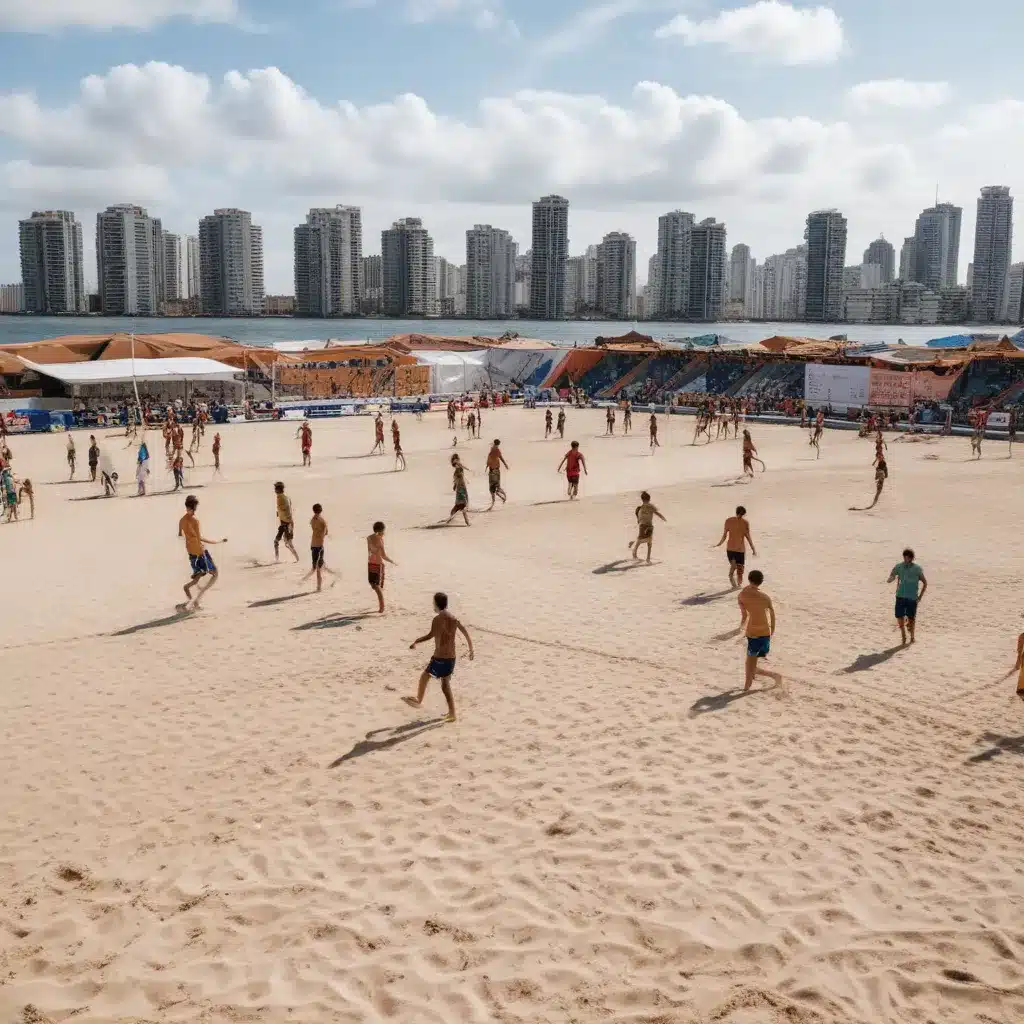
Brazil’s Football Landscape
Brazil’s football landscape is a rich tapestry woven with the threads of national associations, professional leagues, and a deep-rooted passion for the beautiful game. At the apex stands the Brazilian Football Confederation (CBF), the governing body that oversees the sport’s development from the grassroots to the international stage. Complementing the CBF are the state-level football federations, each nurturing the game within their respective regions and contributing to the nation’s footballing ecosystem.
The professional landscape is dominated by the Campeonato Brasileiro Série A, the top-flight league that captivates millions of fans nationwide. Alongside this premier division, the Campeonato Brasileiro Série B serves as a platform for clubs to aspire to the top echelon, ensuring a vibrant and competitive environment across Brazil’s football pyramid.
Beach Soccer in Brazil
Amidst this footballing landscape, a unique and captivating discipline has carved out its own niche – beach soccer. Rooted in the country’s rich beach culture, this fast-paced and acrobatic variant of the sport has long held a special place in the hearts of Brazilians.
Beach Soccer History in Brazil
The origins of beach soccer in Brazil can be traced back to the 1940s, when the game began to gain popularity along the country’s picturesque coastlines. Initially a casual pastime enjoyed by beachgoers, the sport gradually evolved, with local tournaments and exhibitions drawing increasing attention. The 1990s witnessed a pivotal moment, as the first official Brazilian Beach Soccer Championship was held, cementing the discipline’s status as a distinct and celebrated aspect of the nation’s footballing tapestry.
Over the years, influential tournaments such as the Mundialito de Futebol de Areia and the Copa Libertadores de Futebol de Areia have captivated audiences, showcasing the skill, athleticism, and flair that have become hallmarks of Brazilian beach soccer.
Beach Soccer Infrastructure
The growth of beach soccer in Brazil has been inextricably linked to the development of dedicated facilities. These specialized venues, often situated along the country’s picturesque coastlines, provide the stage upon which the sport’s practitioners can hone their craft and thrill spectators.
However, the path to establishing a robust beach soccer infrastructure has not been without its challenges. Navigating the complexities of land use, zoning regulations, and environmental considerations has proven to be a formidable task, requiring the coordination of various stakeholders and the careful balancing of diverse interests.
Stakeholders in Beach Soccer Facility Development
Government Entities
At the forefront of beach soccer facility development in Brazil are the government entities – from federal, state, and municipal levels. These institutions play a crucial role in shaping the landscape, as they are responsible for crafting and enforcing the policies that govern coastal development, land use, and environmental protection.
Navigating the intricate web of regulations and bureaucratic processes has often been a arduous challenge for those seeking to establish or expand beach soccer facilities. Striking a delicate balance between the sport’s growth and the preservation of sensitive coastal ecosystems has been a constant consideration.
Private Sector
Alongside the government’s involvement, the private sector has also emerged as a key player in the development of beach soccer infrastructure in Brazil. Investors, developers, and beach soccer clubs themselves have recognized the potential of the sport and have sought to capitalize on its growing popularity.
These private entities have brought their own set of considerations to the table, including the commercial viability of beach soccer facilities, the need for innovative financing models, and the importance of fostering strong partnerships with local communities and stakeholders.
Regulatory and Policy Considerations
Land Use and Zoning
One of the primary challenges in developing beach soccer facilities in Brazil lies in the complex web of land use and zoning regulations. Coastal areas are often subject to stringent environmental protection laws, which can pose significant hurdles for those seeking to construct new venues or expand existing ones.
The need to navigate the intricate bureaucratic processes, obtain the necessary permits, and address the concerns of various regulatory bodies has often slowed down the progress of beach soccer facility development. Careful planning, community engagement, and a deep understanding of the legal landscape have become essential prerequisites for successful projects.
Funding and Financing
Securing the necessary funding and financing for beach soccer facility development has also emerged as a significant challenge. While public-private partnerships have shown promise, the ability to attract consistent investment and commercial sponsorship remains crucial.
Innovative financing models, strategic revenue generation streams, and the fostering of strong relationships with stakeholders have become key considerations for those seeking to establish sustainable beach soccer infrastructure in Brazil. The ability to balance the sport’s growth with the realities of financial viability has become a delicate balancing act.
Conclusion
The journey of developing beach soccer facilities in Brazil has been marked by a myriad of challenges, from navigating the complex regulatory landscape to securing the necessary funding and investment. Yet, amidst these obstacles, a spirit of resilience and innovation has emerged, as stakeholders from the public and private sectors work tirelessly to create the infrastructure necessary to support the growth and development of this captivating sport.
As Brazil continues to embrace the unique allure of beach soccer, the path forward will require a multifaceted approach – one that harmonizes the diverse interests of government entities, private investors, and the passionate beach soccer community. By navigating these challenges with foresight, collaboration, and a deep respect for the sport’s rich heritage, Brazil’s beach soccer landscape can continue to flourish, captivating audiences and inspiring future generations of players and fans alike.

